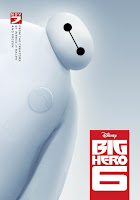July 13, 2015
 |
| Bob, Kevin and Stuart in Minions |
This past weekend’s release of Illumination Entertainment’s Minions chronicles the origins of the Twinkie-shaped henchman of the Despicable Me universe, as three main characters (Kevin, Stuart and Bob) venture out into the world to find the most diabolical villain to serve. As the ads mention, this story takes place in 1968, 42 years before they meet and team up with main baddie Gru.
To be honest, Minions lacks depth in its “story,” but certainly offers plenty of side-splitting absurdity and down-right silliness that echoes back to comic slapstick mayhem of Three Stooges films and Looney Tunes cartoons. On the other hand, for all these little guys’ often naughty faults—they can be rude as little kids sometimes, mind you—there’s an inherent charm, sweetness, camaraderie and sense of family, that makes them caring, in addition to universally-appealing icons in today’s pop culture. In fact, it’s this notion of family and finding somebody to serve that sets the pace for the 2010 original that launched the now ever-growing, Universal Studios-owned animation company.
 |
| (Clockwise from center) Gru, Margo, Agnes, and Edith |
Despicable Me emphasizes and plays with the roles of supervillains, particularly that of a schemer who plots to steal the moon to become the "world's greatest villain,” and by adopting three orphaned girls to help him in the process. There are no heroes per se in this story. (At least, there aren’t any at first.) You could say Gru is rather a wanna-be villain, considering his lackluster preceding plots. Still, he is somebody who loves making peoples' lives miserable.
Gru is obviously not what the three girls (Margo, Edith, and Agnes) expect at first. Yet there's understanding when he's vulnerable. Slowly but surely, they begin to impact him better than expected, much to the dismay of his scientist sidekick Dr. Nefario, who tries to keep him focused on Gru’s lifelong dream to be "somebody".
Gru's transition from "superbad" to "superdad" became the focus of the first film. In the 2013 sequel, Despicable Me 2, he goes from "superdad" to "super" (or secret) agent, as the Anti-Villain League organization hires him to track down a current villain at large.
 |
| Gru (Steve Carell) and Agent Lucy Wilde (Kristen Wiig) |
 |
| Gru shares some exciting news with the girls. |
Even though the minions are the true scene stealers in both films, it is clear that Gru's relationship with his adopted daughters matures, but not without its flaws. Margo experiences first-love instincts. Edith's tomboyish attitude is a bit trouble-making. Agnes longs to have a mother figure in her family, while Gru is sometimes pressured to get out of his single-man status by a nosy neighbor lady who tries to set him up on dates. On the other hand, his girls believe he should be more out-going, while the villainous El Macho tries to get Gru back into a life of crime. ("Men like you, men like me, we should be ruling the world"). Even Dr. Nefario misses his own villainy, yet comes back to stand by his colleague in a time of need.
The minions have a more prominent role in this sequel, which may have been one reason for its success, as well as the recent spinoff/prequel. Nevertheless, they and the other main characters illustrate the importance of family, growing and working together, and having fun together.










